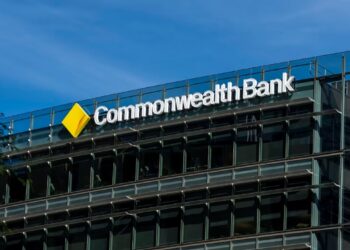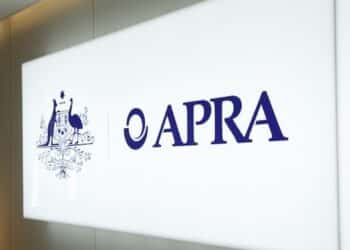Markets are currently experiencing a shake-up, with the recent volatility appearing to be more severe than any seen in the past few years. Investors have been pumping a lot of funds into the investment world and while markets have been good, it has been fairly easy to watch those assets grow and grow. Fix and forget is a term often bandied about and why not? Good returns, even average returns, in a hot bull market have meant that for the majority of Australians invested in managed funds wealth creation has been healthy. This volatility, however, brings the question of transparency of performance into play.
The roller-coaster ride brought on by sub-prime debt chaos in the United States and the resultant perceived liquidity problems will prompt investors to ask their advisers how their portfolios are faring. They will also ask if a more active style of management is warranted. Managed funds are cumbersome things. Placing money in and taking it out of a fund requires a great deal of paperwork and possibly exit fees. This may explain the growing popularity of listed managed investments (LMI). These ASX-listed investment entities, which are traded in the same way as shares, have grown around fourfold in the past five years and, as of July 31, now make up $219 billion worth of the ASX’s market capitalisation.
In the past 12 months alone they have grown by 27 per cent in terms of market cap, while the growth in the number of trades carried out in these securities has increased by an impressive 82 per cent over the same period. “Their popularity can be attributed to their simplicity, as through one investment you can gain access to a professionally managed portfolio of assets,” Aberdeen chief executive Charlie Macrae, whose Aberdeen Leaders fund is listed on the ASX, says.
LMIs fall into one of six broad categories: listed investment companies (LIC), property trusts, infrastructure funds, pooled development funds (PDF), exchange traded funds (ETF) and absolute return funds. Listed property trusts and infrastructure funds have a proven track record for investors over a number of years and have generated most headlines in relation to returns. PDFs are still in their relative infancy, but recently three strategies have developed a following among investors, particularly those in the self-managed superannuation fund (SMSF) space.
Listed investment companies
ASX-listed LICs generally invest in a range of other companies and are similar in concept to a managed fund. The first LIC was established in 1928 and there are now a wide range of investment vehicles that cover the spectrum of investment assets. These may include Australian shares, international shares, fixed income securities, property and unlisted private companies, with some new funds offering what the ASX describes as “packaged strategies”. Most LICs are of a closed-end structure, that is, they are not open for applications and redemptions, with liquidity being provided through trading of the shares on the ASX.
“From a liquidity point of view with the shares quoted on the ASX they [investors] know if they make an investment decision to buy or sell it’s a normal T plus three settlement both ways, so the liquidity is fixed in,” Macrae says. He says the only caveat is that most LMI share registries are fairly tightly held among a limited number of shareholders, so there is not the same trading liquidity as say BHP. “Therefore, it may take a little longer for the retail investor to build the position they want for their portfolio,” he says. For example, to buy the required amount of stock in Aberdeen Leaders may take a couple of weeks, unless of course there is a party on the other side willing to sell, he says.
“The manager can also genuinely take a longer-term view of his investment portfolio, as he isn’t dealing with cash-flow issues on an irregular basis, because you don’t have to deal with the situation of never knowing when redemptions or applications are coming,” he says. There are two models for LMIs. There is the Argo Investments-like model, an in-house manger that has been around since 1946 and which has built up scale to trade on.
The second model is the newer version developed in the 1980s and which has seen a spate of mangers join the ASX in the past few years. It took the route of outsourcing investment management to a third party. In the outsourced listed investment company model, the executive management is effectively the funds management company the board is contracted with. The client, whether a retail investor, adviser or private client broker, is effectively buying the investment manager. The board of directors is charged with looking after the affairs of the listed entity, the same as any board of directors.
Transparency as to how the fund is performing tends to be far greater than a normal managed fund, for example, for the Aberdeen Leaders 25 stock portfolio, the net tangible asset (NTA) value is published on a weekly basis. For others, the NTA is released at least monthly, with all portfolio information being in the public domain. “Ordinarily, a portfolio manager would report its portfolio holdings on an annual basis and with its month NTA release you might see its top 20 investments and what percentage of total assets they represent,” Macrae says. “We have chosen to over-disclose and show the percentage weightings of all our portfolio, including cash.”
According to ASX head of LMIs Ian Irvine, LICs are about getting exposure to both funds and the direct market, while cutting down on the red tape. “These funds are attractive to SMSF trustees in that they cut down the number of investments with the fund, so paperwork is cut down,” Irvine says. “By choosing a small number of LMIs you can diversify and limit the number of pieces of paper you have to take to your accountant at the end of the year. “With one transaction you can buy a diversified portfolio with the advantages of being on the ASX. Today [August 10, the market dropped over 3 per cent] with a managed fund you would not be able to ring up the portfolio manager and ask them what was the value of that managed fund.”
Absolute return funds
Absolute return funds (or hedge funds) are a relatively new phenomenon on the ASX and look to deliver returns in both rising and falling markets. In the two-year period to July 31, the number of hedge funds listed on the ASX grew from 4 to 14, while in the past year alone the market cap has grown by 48 per cent and the number of trades by 86 per cent. The investment techniques adopted by hedge funds have greater use of derivatives, short positions and exotic securities. Investors may receive returns in the form of income, capital appreciation or a combination of both, and this will be dependent on the investment strategy used by the manager.
Hedge funds are not highly correlated to the performance of traditional assets, such as shares, property, or fixed interest, because of the varied mix of assets and style, and as such the risk profile of funds can vary from very conservative to aggressive. Traditionally for the retail or non-dealer group advisers, access to hedge fund strategies has been incredibly limited. Cadence Capital portfolio manager Karl Siegling points out access is limited to the retail market because with a wholesale Australian financial services licence (AFSL) you are not allowed to take retail investors’ money.
“We had a lot of people enquiring on how to get into the structure and the only way to do that was by becoming a listed investment company,” Siegling says. “Typically wholesale investment is half a million dollars and that would wipe out the majority of the retail investing community. “We now have retail dealers and advisers buying the fund on the ASX and all of a sudden people can invest in a strategy with as little as $2000.” According to Wallace Absolute Return founder Richard Wallace, as the group doesn’t have an AFSL, it is important for the investor to do their homework and decide what kind of exposure is appropriate for their portfolios.
“We haven’t directly marketed to financial planners, although some IFAs [independent financial advisers] have recommended our strategy to their clients as a good form of diversification, but we have generally gone through the stockbroking community,” Wallace says. For Siegling, there are also cost savings of not having to be on a platform for distribution. “From a manager’s perspective it lessens the fees that they are charged and allows us to generate our own fee structure,” he says. He says through a platform the whole producer, wholesaler, business development manager structure means each has taken fees down the line before it even reaches the retail end, and those costs have to be passed on.
“The interesting thing about the invested company model is that you bypass that fee structure and the end user is just paying that 1 per cent management fee. There are no other hidden costs such as trails,” he says. “Obviously the hedge fund is slightly different as if we outperform the market by specific hurdles we then charge 20 per cent on the outperformance. If we don’t outperform, we don’t get anything extra. “We also have a greater control over the amount of money we manage, which can be arbitrary under the platform system due to them having the power to redeem mandates at any time.”
Exchange traded funds
ETFs invest in a portfolio of securities, which may include Australian shares, international shares, fixed income securities, listed property trusts or a combination of asset classes. They are still a relatively fledgling retail market but are picking up some traction. Generally based on a particular index, such as the S&P/ASX 200, ETFs are open-ended funds, which issue new or cancel units as investors move into and out of the fund. This maintains on-market prices that correlate closely with the value of the underlying portfolio and therefore prices are determined by the value of the assets the ETF holds rather than by other factors such as investor sentiment.
ETFs can be classified as either indexed or actively managed, while indexed ETFs hold the same shares that make up the index in order to replicate its performance. Investors can reduce fund manager risk since the portfolio returns will track the market rather than depend on the fund managers’ performance. While trading volumes are up almost 20 per cent since a year ago, the number of funds trading on the ASX has actually decreased by almost 40 per cent to 5 per cent.
Despite this, research house Standard and Poor’s (S&P) is now looking to research these funds for investors. “We will be looking to rate exchange traded funds and continue to have some interest in the listed investment companies as well,” S&P Australia managing director Chris Dalton told IFA. “The market is dynamic and continuously changing and we are looking to stay ahead of that.”







